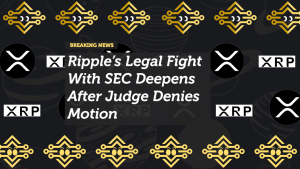
SUI Staking: Leveraging MoveVM for High Yield Potential
The SUI Network, powered by the Move programming language, offers a unique staking experience with high yield potential. As a high-performance Layer-1 blockchain, SUI enables users to participate in securing the network and earn staking rewards. With a focus on scalability and efficiency, SUI’s staking model is designed to provide competitive returns while maintaining network stability.
In this article, we’ll explore the staking mechanics on SUI, how the MoveVM architecture influences yields, and strategies for maximizing your staking rewards. Whether you’re new to staking or looking to optimize your current strategy, this guide will help you navigate the opportunities and risks associated with staking on SUI.
Understanding Staking on SUI: Mechanics and Returns
Staking on SUI involves locking up your tokens to support the network’s security and operations. In return, stakers receive rewards based on their contribution to the network. Here’s a breakdown of how SUI staking works:
1. Validator Performance and Selection:
Validators play a crucial role in maintaining the network’s integrity. They process transactions, create new blocks, and validate state changes. Choosing a reliable validator is key, as validator performance directly affects your staking rewards.
- Validator Uptime: Ensure your chosen validator has high uptime and minimal slashing history to maximize your returns and avoid penalties.
- Commission Fees: Validators charge a commission fee for their services, which is deducted from your rewards. Compare fees across validators to find the most cost-effective option.
2. Staking Fees and Expected Returns:
Staking rewards on SUI are influenced by network parameters such as total staked amount, inflation rate, and validator performance. As the network matures, yields may adjust based on these factors.
- Expected APY: The average Annual Percentage Yield (APY) on SUI staking can range from 5% to 12%, depending on network activity and validator performance.
- Compounding Rewards: Reinvesting your staking rewards can significantly increase your overall returns through compounding.
By understanding these staking mechanics, you can make informed decisions about which validators to choose and how to optimize your staking strategy.
MoveVM & Its Impact on SUI Staking
The Move programming language underpins SUI’s unique architecture, providing a robust and secure environment for decentralized applications. This architecture directly impacts staking yields and network efficiency.
1. Efficient Resource Management:
MoveVM allows for efficient execution of transactions, reducing the computational load on validators. This efficiency means that the network can handle more transactions with lower fees, which can positively impact staking rewards.
2. Dynamic Gas Fees:
SUI’s gas fee model, influenced by MoveVM ’s design, dynamically adjusts based on network demand. Lower gas fees mean that more transactions can be processed per block, potentially increasing validator rewards and, by extension, staking yields.
3. Enhanced Security Features:
MoveVM includes built-in security features that minimize the risk of common vulnerabilities, such as re-entrancy attacks. This robust security framework enhances the reliability of validators, reducing the risk of slashing and contributing to more stable staking rewards.
Overall, MoveVM’s architecture provides a solid foundation for sustainable staking yields on SUI, making it an attractive option for long-term investors looking to maximize their returns.
Sustainable Staking Yields on SUI
Maintaining sustainable staking yields is crucial for the long-term health of the SUI network. As more users join and the network scales, SUI’s economic model must balance rewards and security.
1. Staking Reward Adjustments:
SUI employs a flexible reward model that adjusts based on network conditions. This ensures that staking rewards remain competitive, even as the total amount of staked tokens increases.
- Inflation Control: The network’s inflation rate is managed to prevent excessive token dilution, which can devalue staking rewards. By controlling inflation, SUI aims to provide consistent returns for stakers.
2. Network Demand and Scalability:
As the SUI ecosystem grows and more dApps are built, demand for staking may increase. This could lead to higher competition among validators, driving up yields in the short term. However, sustainable yield growth will depend on the network’s ability to handle increased activity without compromising performance.
3. Incentives for Long-Term Stakers:
SUI offers additional incentives for long-term stakers, such as bonus rewards for holding staked positions over extended periods. These incentives encourage users to maintain their staked positions, contributing to network stability and sustainable yields.
By focusing on these factors, SUI aims to maintain a healthy balance between network security and rewarding participation, ensuring that staking remains an attractive option for users.
Risk Management for SUI Stakers
While staking on SUI offers the potential for attractive yields, it’s important to be aware of the associated risks. Here are some strategies to help you manage these risks:
1. Choose Reliable Validators:
Validator performance is critical to maximizing staking rewards. Look for validators with a strong track record of uptime and no history of slashing events.
- Slashing Risk: Validators can be penalized for malicious behavior or downtime, which can result in a loss of staked tokens. To mitigate this risk, spread your staked tokens across multiple reliable validators.
2. Monitor Network Volatility:
Like any blockchain, SUI’s network can experience periods of high volatility. Stay informed about network upgrades, governance proposals, and other events that may impact validator performance or staking yields.
3. Diversify Your Staking Portfolio:
Consider diversifying your staking across different platforms and validators. This can help mitigate the impact of any single validator underperforming or being slashed.
By implementing these risk management strategies, you can protect your investment while taking advantage of the yield potential that SUI staking offers.
Building Passive Income with SUI Staking
SUI staking provides a unique opportunity to build a steady stream of passive income. Here’s how you can optimize your staking strategy to maximize returns:
1. Reinvest Rewards:
One of the simplest ways to increase your staking returns is to reinvest your rewards. By compounding your earnings, you can significantly boost your overall APY over time.
2. Leverage Validator Pools:
Participating in validator pools allows you to stake with smaller amounts and benefit from the collective performance of the pool. This can help reduce individual risk and increase overall returns.
3. Explore Liquid Staking Options:
Platforms offering liquid staking solutions for SUI provide additional flexibility. Liquid staking allows you to use your staked assets as collateral in DeFi applications while still earning staking rewards.
By implementing these strategies, you can create a reliable passive income stream through SUI staking, leveraging the network’s high yield potential and innovative architecture.
Conclusion: Maximizing Your SUI Staking Potential
SUI staking, powered by the MoveVM, offers a compelling opportunity for those looking to earn passive income through high staking yields. By understanding the mechanics of SUI staking, managing associated risks, and utilizing effective strategies, you can optimize your staking experience and maximize your returns.
As the SUI network continues to grow and evolve, staying informed about updates and developments will be key to maintaining sustainable yields and making the most of your staking investment. Whether you’re a seasoned staker or new to the platform, now is the time to explore the potential of SUI staking and leverage its unique architecture for long-term financial growth.
















